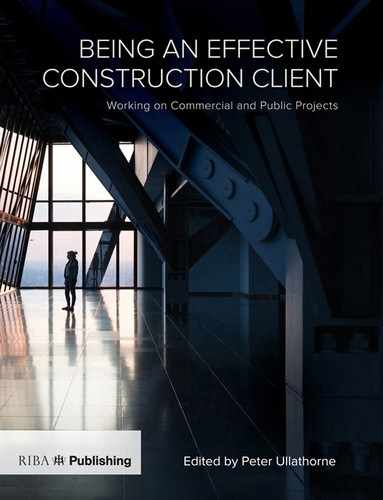Foreword
These are challenging times to be a client for a building. Pressures are rising, ideas and attitudes are changing and technology is offering new approaches. Few clients are expert in their role, hence the use of the word ‘client’, meaning a dependant. Those that are expert build constantly and confidently, often in infrastructure businesses, commercial developers or institutional bodies like universities. Even these continuous clients compare notes with peers. The majority of clients are less experienced and it is to these that this book is addressed, though all may find value in it.
The world is in the throes of a building boom unlike any before. Billions of people are moving into cities over the next few decades and urbanisation is exploding across the developing world. This is putting global pressure on resources for construction, but also creating new sources of low cost components. The challenge of sustainability is growing, both from regulation and from corporate reputation factors. In the UK the capacity of the ndustry, to design, manufacture and assemble buildings has been greatly reduced by the long recession between 2008 and 2012. Returning demand is hitting supply constraints.
Over the 20 years since the Latham Review of the Construction Industry, clients have moved towards collaborative forms of working with designers and contractors, only to abandon them for fixed-price tenders when the cut-throat market of 2008–12 seemed to offer better deals. Now the sellers have market power again and there are deeper reasons for collaboration: the government has intervened to move the market. Its 2011 Construction Policy sought to drive out cost and increase value from construction for central government clients. It introduced tools of great use to all clients: benchmarking to reveal the achievable cost levels for building types, ‘Soft Landings’ to ensure that buildings are delivered in proper working order and that their reasons for construction are proved to be achieved, and Building Information Modelling to support a much more effective design and construction process, together with the basis for good whole-life management of the facility. Whole-life performance has become definable and deliverable with the new tools available.
This central initiative was pushed further in 2013 by the creation of an Industry Strategy for Construction, agreed by the government and leaders of the industry in partnership. It sets goals for 2025 which include reducing the capital and whole-life costs of buildings by 33%, decreasing carbon emissions by 50% and also halving the time taken to move from decision to build to completion. These apparently ‘stretching’ targets are actually almost within the benchmarked range observed between projects with expert clients and those without.
Client skills are the key to success, yet they don’t teach these skills in business school. Less experienced clients can emulate the expert ones if they follow the precepts in this book. The leading requirement is to prepare properly. Time spent on reconnaissance is seldom wasted, as the Duke of Wellington opined. Is there a clear business case for a building or could the need be met another way? Who are the internal and external stakeholders and are they participating properly? Is the proposed site or building for conversion feasible? Are the resources needed available, both to build and to operate the facility? What will success look like? Has the client got the time and capacity to play the client role properly? How much risk are they able to manage?
Clients need not be alone. Advisers are necessary and can fill out your skill set. Executive horsepower can be hired. Support groups for clients exist. British Standards provide sound workbooks. The new RIBA Plan of Work provides a framework for all the steps required. But the final decisions are the client’s. They need to understand what the ‘value proposition’ of their project is: how it delivers benefits that suitably exceed costs. Value has many dimensions: use, exchange, image, environmental, social and cultural. It is embodied in the design they select, not in the work on-site. They need to be able to explain the value proposition to internal and external participants and to recognise when they are hitting or missing their goals. Armed with the insights in this book, clients should be more confident of success.
